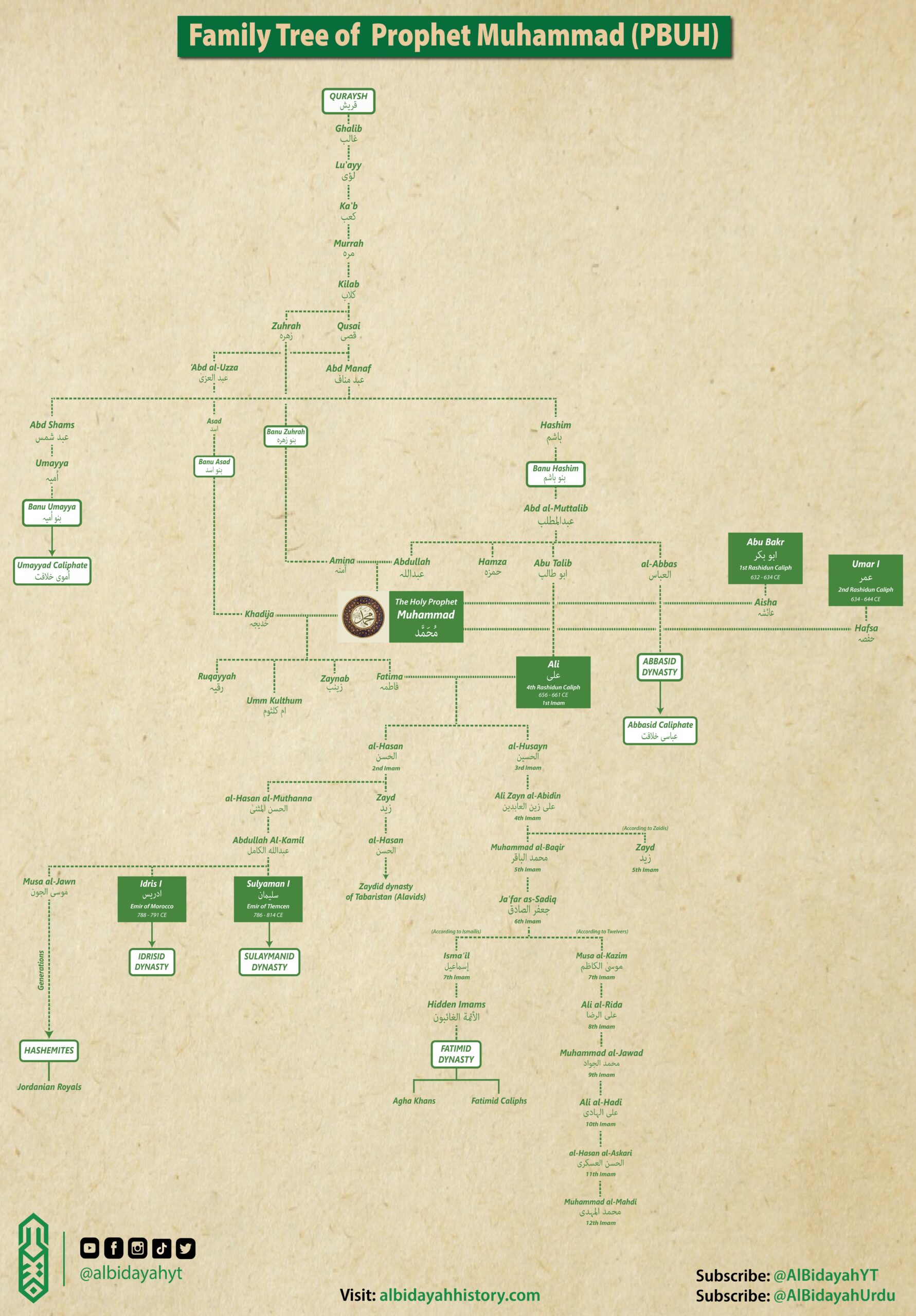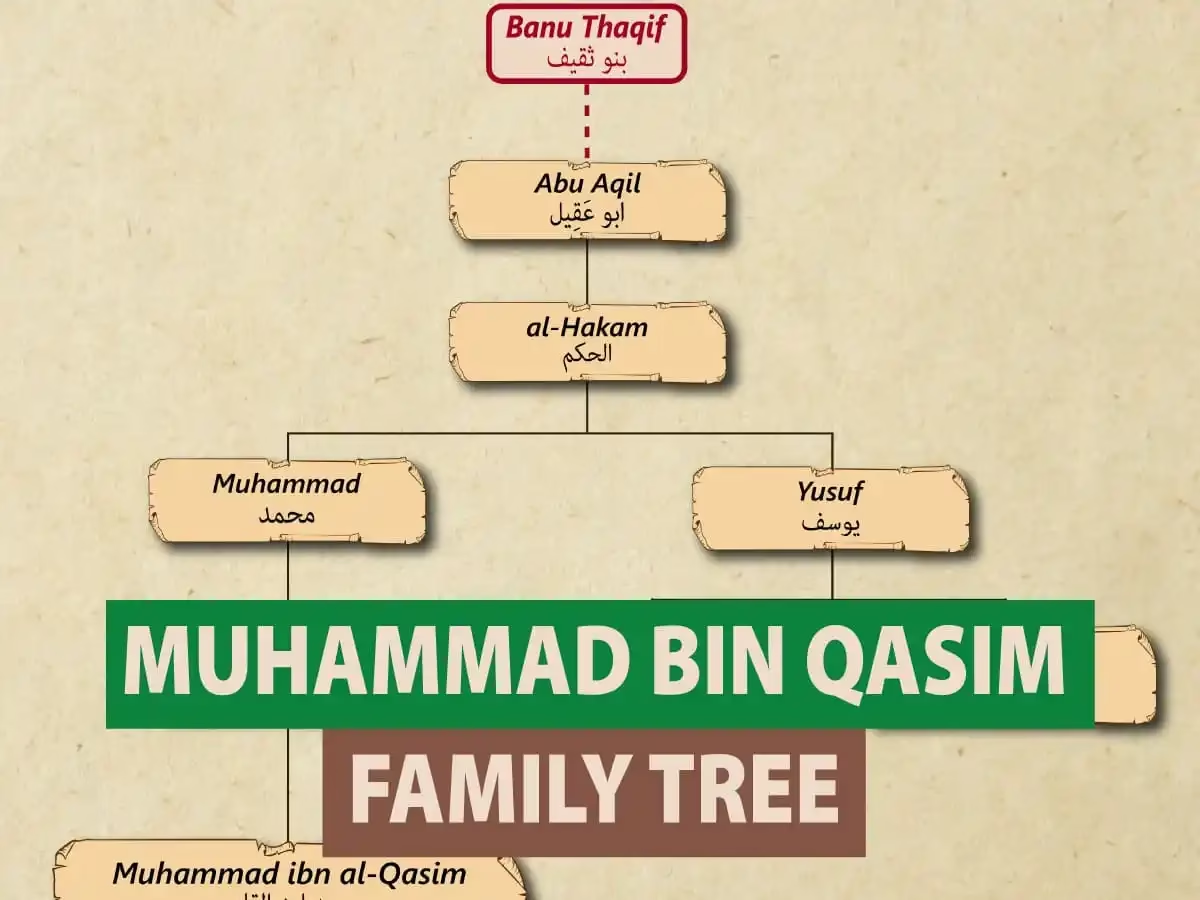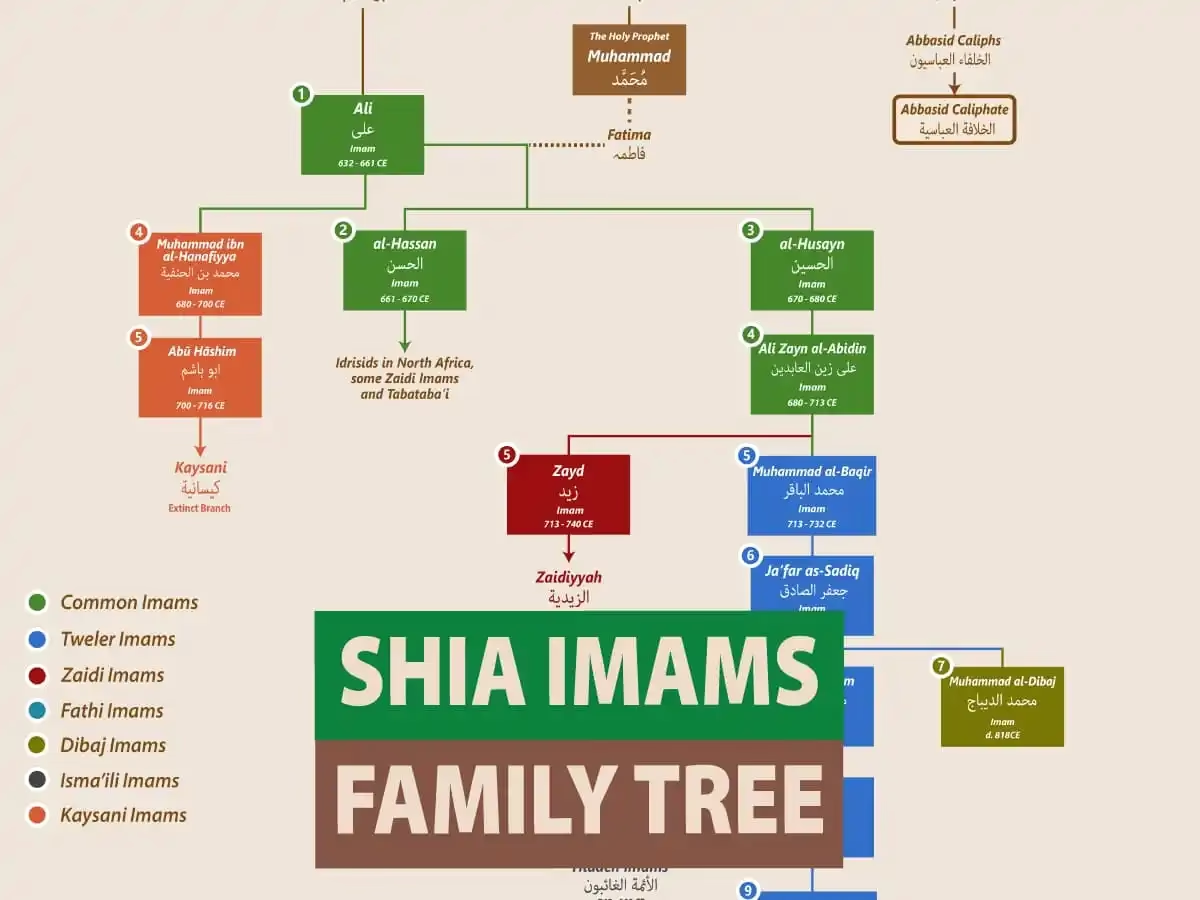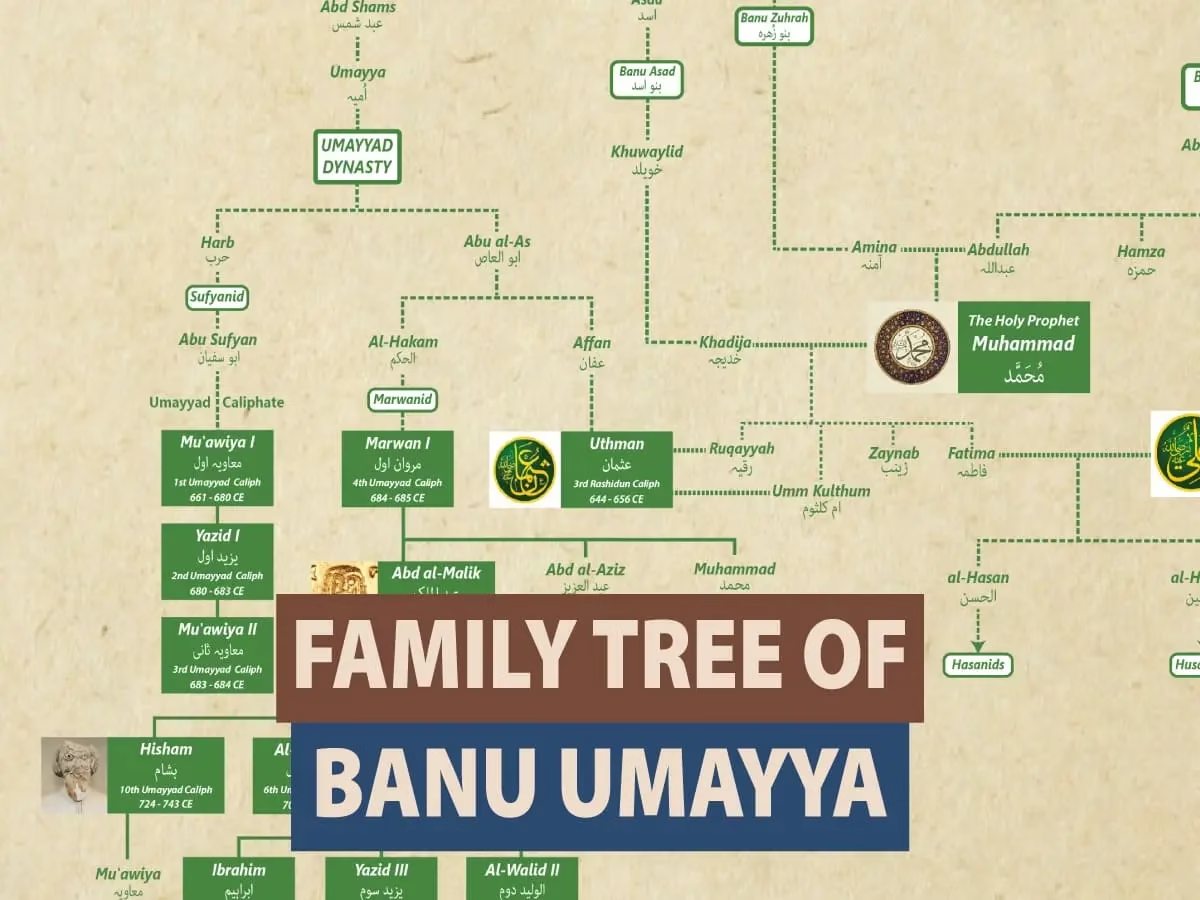The family tree of Prophet Muhammad (PBUH): from Quraysh to Imam Mahdi (English and Urdu), is a significant lineage that highlights the heritage and spiritual foundation of Islam. This tree includes key figures who played essential roles in the spread and development of Islamic teachings, as well as the origins of major dynasties and movements within Islam.

1. Roots in the Quraysh Tribe
The family tree begins with the Quraysh tribe, a powerful and respected tribe in the Arabian Peninsula. The Quraysh were prominent in Mecca and held the responsibility of caring for the Kaaba. The Prophet Muhammad (PBUH) descended from the Banu Hashim clan within the Quraysh tribe, a lineage known for its nobility and leadership.
2. Prophet Muhammad (PBUH)
The central figure in this family tree, Prophet Muhammad (PBUH), was born to Abdullah and Aminah, descendants of Hashim. As the final prophet in Islam, he received divine revelations that laid the foundation of the Quran. His life and teachings form the core of Islamic belief and practice.
3. Imam Ali and the Start of the Ahl al-Bayt Lineage
Ali ibn Abi Talib, the Prophet’s cousin and son-in-law, married Lady Fatima, the Prophet’s beloved daughter. Ali is a pivotal figure in Islamic history, revered as the fourth caliph and the first Imam in Shia Islam. His marriage to Fatima established the Ahl al-Bayt, or “People of the House of Prophet Muhammad,” an honored family lineage in Islam. This union produced two sons, Hasan and Husayn, who are highly respected figures in both Sunni and Shia traditions.
4. Hasanids and Husaynids
Imam Hasan and Imam Husayn, grandsons of the Prophet, are key figures in the history of Islam. They symbolize purity, sacrifice, and resistance against oppression. Imam Husayn’s martyrdom at the Battle of Karbala is commemorated annually by Muslims worldwide, particularly by Shia Muslims. The descendants of Hasan and Husayn formed the two primary lines of the Shia Imams and played central roles in the establishment of Islamic dynasties and spiritual movements.
5. Branches of the Imams: Twelver, Ismaili, and Zaydi Lineages
The family tree showcases the division of Shia Islam into several branches, each with its own line of Imams.
- Twelver Lineage: This branch follows a line of twelve Imams, beginning with Ali and ending with Muhammad al-Mahdi, who is believed to be in occultation and will return as the Mahdi (guided one). The Twelvers form the largest Shia sect and view the twelve Imams as spiritual and temporal leaders.
- Ismaili Lineage: The Ismailis diverged from the Twelver line by following Ismail, the son of Imam Ja’far al-Sadiq. Ismailis trace their Imams through Ismail’s lineage, leading to the Fatimid Caliphate in Egypt and the current Aga Khans.
- Zaydi Lineage: The Zaydis, another branch of Shia Islam, follow Zayd ibn Ali, a son of Imam Ali Zayn al-Abidin. Zaydis believe in a different interpretation of Imamate, focusing on descendants who actively resisted oppression. The Zaydis established a presence in Yemen, where they have a historical legacy.
See Also: Family Tree of Shia Imams
6. Notable Dynasties and Movements
Several dynasties and movements emerged from the Prophet’s family tree, shaping Islamic history in profound ways.
- Abbasid Caliphate: Descendants of the Prophet’s uncle al-Abbas founded the Abbasid Caliphate, which ruled from Baghdad and is known for its golden age of Islamic culture, science, and learning. The Abbasids overthrew the Umayyads and established a lasting Islamic empire.
- Fatimid Dynasty: An Ismaili Shia dynasty claiming descent from Fatima, the Fatimids ruled parts of North Africa, Egypt, and the Levant. Known for their religious tolerance and patronage of learning, the Fatimids established Cairo as a center of Islamic culture.
- Idrisid Dynasty: Founded by Idris I, a descendant of Imam Hasan, the Idrisid dynasty ruled in Morocco and is regarded as one of the earliest Shia dynasties in North Africa. They contributed to the spread of Islam in the Maghreb region.
- Hashmites: The Hashemites, descendants of the Prophet Muhammad (PBUH) through his daughter Fatima and son-in-law Ali, played a significant role in Islamic history. They are one of the oldest noble lineages in the Arab world, with modern Hashemite rulers now reigning in Jordan. Revered for their direct descent from the Prophet, the Hashemites have traditionally been seen as guardians of Islamic heritage.
See Also: Banu Abbas Family Tree
7. Sufi and Spiritual Orders
Many Sufi orders trace their spiritual lineage to the family of the Prophet. This connection to the Ahl al-Bayt is highly regarded in Sufi traditions, where the Prophet’s family members are seen as sources of spiritual wisdom and guidance.
See Also: Banu Umayya and Banu Hashim Family Tree



